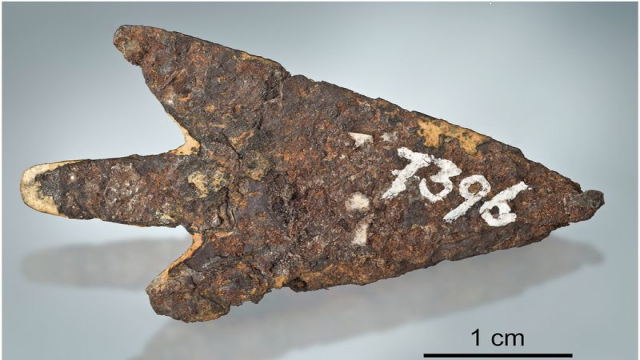Meteorite Arrowhead in Switzerland
Archaeological discoveries often shed light on the rich history of our ancestors, and one such intriguing find is an ancient arrowhead made of an extraordinary material. In the 19th century, an arrowhead was unearthed in Switzerland, and to the astonishment of researchers, it was crafted from an unexpected material – iron from the sky.
Tracing the Meteorite’s Origins
According to scientists, the meteorite that contributed to the creation of the arrowhead is believed to have originated from Estonia. The astonishing revelation of its distant origin highlights the existence of extensive trade networks that thrived thousands of years ago. The fact that this meteorite iron traveled from such a considerable distance is a testament to the complex connections and exchanges between ancient civilizations.
Contributing to Prehistoric Iron Resources
During prehistoric times, pure iron was a scarce resource, making it essential for our ancestors to seek alternative sources. Iron meteorites, which are more resilient during atmospheric entry, became a valuable source of iron for the ancient people. It is presumed that most Bronze Age iron tools and weapons were crafted from meteoritic iron due to its availability and unique properties.
Regions of Discovery
While most meteoritic iron artifacts have been found in regions such as the Middle East, Egypt, and Asia, this extraordinary arrowhead was discovered in Switzerland. The settlement of Mörigen in Switzerland, thriving during the Bronze Age, became a promising location for such discoveries, close to the Twannberg field, known for meteoritic iron fragments from ancient impacts.
The IAB Meteorite Class
The arrowhead’s composition indicated that it belonged to a specific class of iron meteorite known as IAB meteorites. This classification provides valuable insights into the ancient trade routes and networks that facilitated the movement of this extraordinary iron material.
Month: Current Affairs - August, 2023
Category: Science & Technology Current Affairs


